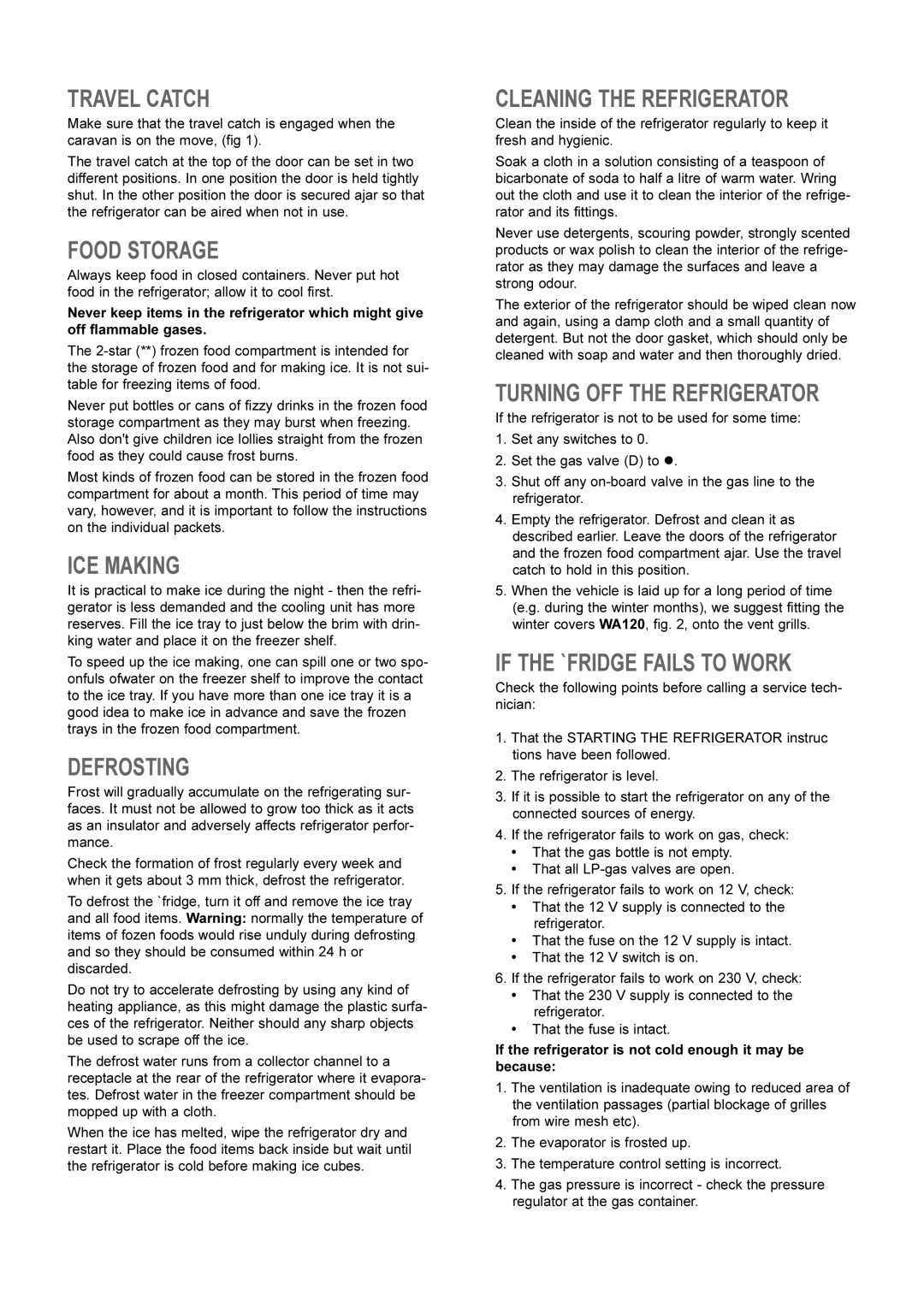RM 4200, Rm 4211, RM 4201, RM 4210 specifications
The Electrolux RM 4210, RM 4201, RM 4211, and RM 4200 are a series of high-efficiency, innovative refrigerators designed to meet the diverse needs of consumers seeking both functionality and reliability. These models are particularly suited for those looking for advanced cooling technology combined with energy efficiency.One of the defining features of these Electrolux refrigerators is their impressive cooling system. The "DynamicCooling" technology ensures that the interior temperature remains constant, effectively preventing temperature fluctuations that can compromise food safety. This technology also enhances the preservation of fresh fruits and vegetables, maintaining their texture and flavor for a longer duration.
Another significant characteristic is the "MultiFlow" air distribution system, which allows for even air circulation throughout the refrigerator and freezer compartments. This prevents the formation of hotspots and promotes effective cooling by distributing the cold air evenly around the food items. As a result, users experience superior storage conditions for perishables, thereby reducing waste.
Energy efficiency is a hallmark of the Electrolux RM series. These models are designed to minimize energy consumption while maximizing performance. They boast an A+ energy rating, making them one of the more sustainable choices available on the market today. The use of LED lighting not only illuminates the interior effectively but also contributes to lower energy use compared to traditional lighting solutions.
The exterior design of these models is both modern and practical. The stainless steel finish not only offers a sleek aesthetic but is also easy to clean and resistant to fingerprints. Furthermore, the ergonomic handle designs ensure ease of access while maintaining a sophisticated look.
In terms of storage, the RM series offers flexible shelving options, allowing users to customize their storage space according to their needs. Adjustable glass shelves and door bins enable efficient organization, accommodating various sizes of groceries and beverages without hassle.
Overall, the Electrolux RM 4210, RM 4201, RM 4211, and RM 4200 present a well-rounded solution for modern kitchens. With their advanced cooling technologies, energy efficiency, and thoughtful design, these refrigerators cater to consumers who prioritize both performance and aesthetic appeal in their home appliances. Raising the standard for household refrigeration, Electrolux continues to innovate, ensuring that freshness and convenience remain at the forefront of their product offerings.
